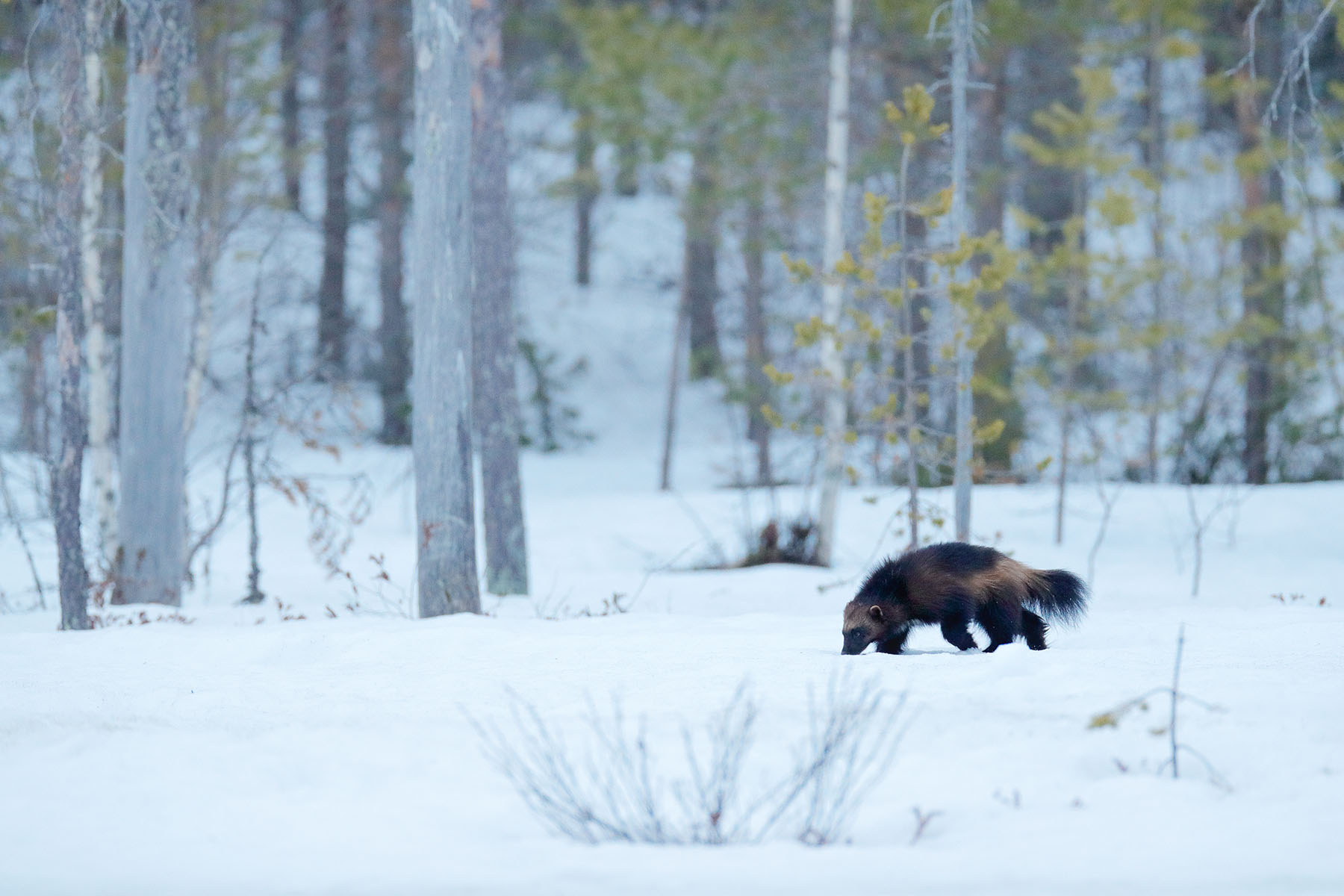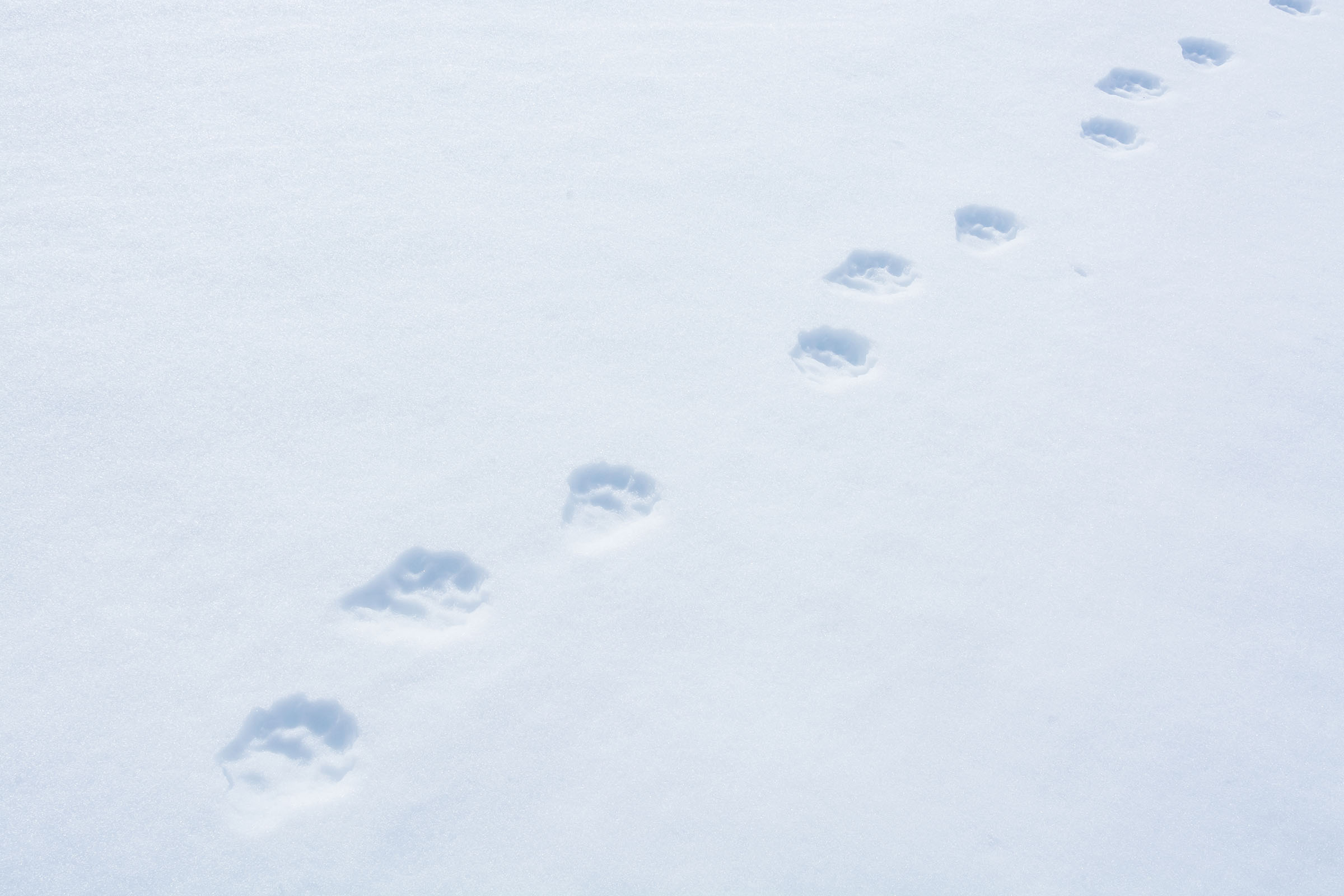Take Action TODAY:
Request the USFWS prohibit incidental take from lawful trapping of other Wildlife


Submit Comments by Monday, May 6, 2024
Your Voice Matters
Wolverines are a THREATENED species
Fewer than 300 are estimated across California, Idaho, Montana, Nevada, Oregon, Utah, Washington, and WyomingThe United States Fish and Wildlife Service (USFWS) listed the North American Wolverine in the contiguous U.S. as a threatened species under the Endangered Species Act (ESA) in November 2023.
“Current and increasing impacts of climate change and associated habitat degradation and fragmentation are imperiling the North American wolverine,” said Pacific Regional Director Hugh Morrison. “Based on the best available science, this listing determination will help to stem the long-term impact and enhance the viability of wolverines in the contiguous United States (FWS Press Release).”
But there is a glitch, a 4(d) Rule has been issued, and the USFWS needs your feedback!
The proposed rule to limit predator killing for the unscientific purpose of increasing ungulate populations represents a step in the right direction. However, the rule should also explicitly prohibit trapping, such as indiscriminate body-gripping traps and killing predators for recreation and damage control. These activities run counter to making these lands a refuge for our wild neighbors.
- Suggested talking points are below.
About the 4(d) Rule post ESA Threatened Status
The USFWS drafted a 4(d) Rule, which is not required but, when done, intended to “prevent further decline and facilitate recovery” and “incentivize proactive conservation efforts” (USFWS 4(d) Rule Fact Sheet). Incidental take (death) via trapping/snaring is significant in Wolverine mortality.
Since our 2018 SSA, there is substantial evidence demonstrating that trapping has impacted wolverine densities in southern British Columbia and Alberta over the last decade (e.g., Kortello et al. 2019, pp. 1, 10; Mowat et al. 2020, entire; Barrueto et al. 2020, p. 296; Barrueto et al. 2022, entire). In addition, there appear to be edge effects from trapping, with impacts to wolverine densities extending into protected areas in southern Canada (Barrueto et al. 2020, p. 296; Barrueto et al. 2022, p. 4). In the most expansive study of wolverine trapping and density to date—and encompassing southern British Columbia and Alberta’s zone of connectivity with the Northern Rocky Mountains of the U.S.—wolverine trapping mortality was found to be unsustainably high at approximately 8.4% per year (Mowat et al. 2020, p. 221). Kill rates were higher in the southern British Columbia portion of the study area, with the best estimate of trapping mortality there approaching 10% per year (Mowat et al. 2020, p. 223). This contrasts with the maximum sustainable harvest of approximately 8% after accounting for the influence of higher trap vulnerability of juveniles and males and stochasticity in juvenile recruitment rates (Mowat et al. 2020, p. 221). However, uncertainties in the stochasticity of reproduction had large effects on the estimates of maximum sustainable harvest, causing it to vary between 0 and 8.1% (Mowat et al. 2020, p. 221). Based on their analyses, Mowat et al. (2020, p. 224) recommended reducing trapping mortality to less than or equal to 4% per year (and perhaps more than that for an interim period) across their study area to promote wolverine population recovery. [This paragraph is taken from the Draft Species Assessment Addendum for North American Wolverine, USFWS, Feb 2023, pg 38-39]
In the United States, legally targeted trapping of wolverine has not occurred in the past ten years. However, recreational trapping is indiscriminate, occurs in wolverine habitats, and has resulted in wolverine injuries and deaths in the last ten years. This new rule makes killing or injuring wolverine in traps set for other wildlife legal. This is unacceptable. How would this create an incentive for recreational trappers to take strides in avoiding the accidental capture of wolverine?
Wyoming - Protected Animals (Wolverine) Trapping Regulations
Currently, in Wyoming, the Wyoming Game and Fish Department (WGFD) requires that any Protected Animal incidentally captured in a trap set for furbearers or predators be released unharmed and any capture that results in death or injury be reported to the WGFD as soon as reasonably possible.
TITLE 23 – Game and Fish Chapter 1- Administration Article 1 – General Provisions 23-1-101.
Definitions of wildlife.
(a) As used in this act:
(ix) “Protected animal” means black-footed ferret, fisher, lynx, otter, pika, or wolverine;
Only common and abundant species of wildlife can be legally trapped in Wyoming. No threatened, endangered, or state-protected animals (like river otters, lynx, and wolverines) can be legally trapped.
2023/2024 Wyoming Game and Fish Furbearing Animal Hunting or Trapping Regulations
Chapter 4: Furbearing Animal Hunting or Trapping Seasons
Section 11. Trapping of Non-Target Wildlife; Disposition of Furbearing Animals at the Trap Site
a. All big or trophy game animals, game birds, protected animals, or protected birds that are trapped shall be released unharmed.
b. If a big or trophy game animal, game bird, protected animal, or raptor is trapped and has been injured in such a way that the injury may result in death of the animal or if the animal has been killed, the trapper shall notify a Department law enforcement officer as soon as possible.
No steps have been taken to “minimize” the potential incidental take of wolverines from traps and snares. No “best practices” recommendations are included in states’ trapping regulations, nor are they required because of how the broad exemption in the 4(d) rules is phrased. Indeed, states like Idaho, Montana, and Wyoming now have broad, unfettered discretion to define what “best practices” to minimize wolverine take are and to include (or not) such practices in their regulations.
There is no valid reason for the 4(d) Rule to create a loophole legalizing and allowing further incidental takes.
Talking Points
We offer science-based talking points to compose your comment in your own words.
How should you say it?
Why is trapping mortality an acceptable exception noted in this 4(d) Rule?
- The 4(d) rule to blanket exemption from take for trapping will undermine (not further) the conservation of wolverine in the lower 48 states.
- The best available science reveals the 4(d) rule’s broad exemptions from Section 9’s prohibition on take for trapping and logging projects fall short and fail to further the conservation of wolverine. The best available science also reveals wolverines in the lower 48 States qualify for “endangered” status, thus alleviating the need for the rule itself.
- In support of this trapping exemption, the Service maintains the incidental take of wolverine in the lower 48 States from trapping “is minimal” and will not “significantly impact” the population. As explained by the agency: “If we assume there are approximately 300 wolverines in the contiguous United States and assume two wolverine mortalities per year for incidental trapping,” that would “be 0.67 percent of the population per year,” which will not “inhibit the conservation” of Wolverine. This finding, however, conflicts with the best available science. In short, losing individual wolverines – even a few- from trapping is a stressor and can undermine the species’ conservation in the lower 48 states.
- When wolverines are caught and killed in traps in Montana and throughout the lower 48 States, it is almost always “accidental” or “incidental” to otherwise legal trapping in areas occupied by wolverines.
- The loss of a single individual wolverine – especially a dispersing female – can be significant for population recruitment, connectivity, and functioning meta-population dynamics. According to the best science, if the metapopulation dynamics break down, either due to changes within the subpopulation or due to the loss of connectivity (from climate change, trapping, or development), then “the entire metapopulation may be jeopardized due to subpopulations becoming unable to persist in the face of inbreeding or demographic and environmental stochasticity.” 78 Fed. Reg. at 7867.
- Wolverines are particularly vulnerable when they leave protected areas, like Yellowstone and Grand Teton National Parks (where trapping is prohibited) or remote wilderness areas (where trapping is more difficult and less likely). As explained in The Wolverine Way, the mortality data from dispersing wolverines show they run a “fairly high risk of being killed by people outside strictly protected lands such as national parks.”
- The wolverine population in the lower 48 States lacks sufficient genetic diversity and is too small (both census and effective size) to exempt incidental take from trapping.
- Therefore, the Service’s decision to exempt wolverine take from trapping in the interim 4(d) rule must be viewed in the context of an extremely small total population that is likely already experiencing generic drift. Unnecessarily losing two wolverines a year to recreational trapping in areas occupied by wolverine in the lower 48 States – even assuming that figure is correct – is not “minimal.” Such a loss is two too many when one considers the low genetic diversity and low effective and total population numbers in the lower 48 States and how that may affect meta-population dynamics.
- Allowing an exemption from take for trapping in the 4(d) rule cannot be viewed in a vacuum but must be considered in combination with other cumulative stressors to wolverine in the lower 48 states.
- The Service carefully evaluates, analyzes, and considers these combined threats. Nowhere does the Service apply the best available science and evaluate how its decision to exempt trapping from take and the anticipated loss of two wolverines a year, in conjunction with existing threats from climate change, small population size, low genetic diversity, and other secondary threats may cumulatively threaten wolverine. This is a major oversight and one that, if corrected, warrants a new 4(d) rule without exemptions for take from trapping.
- No steps can be taken to “minimize” the potential incidental take of wolverines from traps and snares.
- The trapping exemption in the Service’s 4(d) rule exempts trapping for other species in areas occupied by wolverines, provided that trapping is done in accordance with state law and regulations and conducted “in a manner that uses best practices to minimize the potential for capture and mortality of wolverines.” But no details about what those best practices” may be, nor how they will be determined, are provided. Nor, as explained above, is there any scientific support for the notion that baited traps and snares used to catch bobcats, wolves, and other species can be modified in such a way to limit or minimize incidental take of wolverine – a fierce scavenger.



Kent Abernethy
Stop Trapping in Wolverine Country.
Dree Boggs
I am in opposition of the 4(d) rule
Mary McCarty
Please be clear on what exactly the best practices are to avoid trapping a Wolverine.
We must prohibit incidental take from lawful trapping of other Wildlife. Wolverines are going to be extinct if we don’t fix this now.
Please do the right thing.